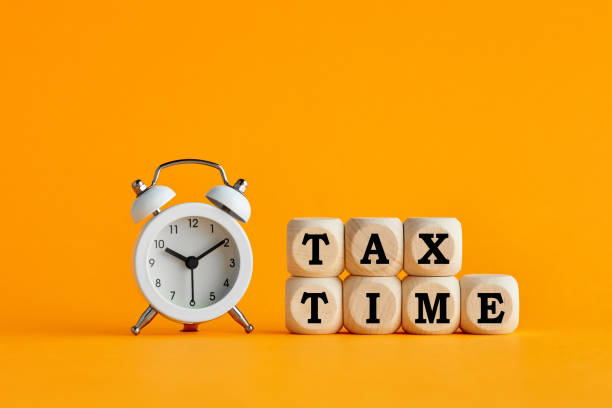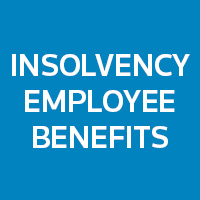
When you suffer the loss or destruction of assets through natural disasters or through compulsory acquisition, you most likely will be in a position to receive money or another asset (or both) as compensation. You are also left with a choice to either defer any capital gains liability (CGT) or receive an exemption. We look at the top 10 rules for when this occurs.
Urban growth often triggers a correlative expansion of our road networks and related civil works. To accommodate these you might find yourself losing your home or a portion or all of your land through its compulsory acquisition by a government agency. Similarly, natural disasters in the guise of hurricanes, floods and fires can lead to wide-scale destruction of property and personal assets.
In both situations you could receive money or another CGT asset (or both) as compensation, leaving you with a choice to:
-defer your liability to pay tax on any capital gain arising on the disposal (ie, rollover); or
-receive a CGT exemption for any replacement asset if you acquired the original asset before 20 September 1985.
If the asset is property and it qualifies as your main residence, then you can ignore any capital gain or loss that results from the compulsory acquisition.
Qualifying for CGT rollover can bring a number of tax benefits for small business and individuals, but navigating the intricacies of CGT exemptions and rollover rules can take some work. To help we have compiled a list of the top 10 rules for application of the rollover, but please get in touch with us for advice tailored to your individual circumstances.
Top 10 rollover rules
1. The rollover only applies if the taxpayer has made a capital gain on the compulsory acquisition of a post-CGT asset (or its loss or destruction).
2. The rollover applies if either money (ie, compensation), or a replacement asset is received for the compulsory acquisition (or its loss or destruction).
3. If money is received the taxpayer must incur expenditure in acquiring a “replacement” asset and the expenditure must begin to be incurred no later than one year after the income year in which the compulsory acquisition occurs – being the income year in which the contract for compulsory acquisition is entered into (or within such further time as the Commissioner allows).
4. Basic requirements for a replacement asset are:
it cannot be a depreciating asset;
if the compulsorily acquired asset was used, or installed ready for use, in the taxpayer’s business, the replacement asset must also be used for a “reasonable time” after the taxpayer acquires it
if the compulsorily acquired asset was not used, or installed ready for use, in the taxpayer’s business, the taxpayer must use the replacement asset for the “same” or a “similar” purpose as the compulsorily acquired asset immediately before its acquisition – and for a reasonable time after acquiring it.
5. If the compulsorily acquired asset was a pre-CGT asset, the replacement asset will also be deemed to be pre-CGT status provided:
the taxpayer does not expend more than 120% of the market value of the original asset (immediately before its disposal) in acquiring a replacement asset or;
if the asset was destroyed by natural disaster, it is reasonable to treat the replacement asset as “substantially the same” as the original asset.
6. Despite the application of the rollover, an immediate CGT liability will arise if the compensation received exceeds the expenditure on the replacement asset. The amount of the capital gain in this case will depend on the following:
If the capital gain that would otherwise have arisen from the compulsory acquisition is greater than the “excess” of the compensation over the expenditure incurred on a replacement asset, then a capital gain will arise equal to that “excess”. See Example 1 below.
Example 1
John owns an asset that has a cost base of $10,000. The asset is destroyed and he receives $40,000 in compensation. John spends $24,000 in replacing the asset. There will be a “notional” capital gain of $30,000 (ie, $40,000 compensation less $10,000 cost base). This notional capital gain of $30,000 is greater than the “excess” of $16,000 (ie, $40,000 less $24,000). Therefore, John will realise a capital gain of, $16,000, which is the amount of the “excess”. In calculating any future capital gain or loss on the replacement asset, the cost base expenditure incurred on the replacement asset (ie, $24,000) is reduced by the amount by which the notional gain (ie, $30,000) is more than the “excess”(ie, $16,000); so $24,000 is reduced by $14,000 ($30,000 less $16,000), leaving cost base expenditure for the replacement asset of $10,000.
If the capital gain that would have arisen from the compulsory acquisition is less than or equal to the “excess” of the compensation received over expenditure on a replacement asset, then the capital gain is not reduced. See Example 2 below.
Example 2
Jenny receives $4,000 compensation for damage to an asset. The cost base of the asset is $1,600. Jenny expends $1,000 repairing it. There will be a notional capital gain of $2,400 (ie $4,000 less $1600) and the “excess” will be $3,000 (ie $4,000 less $1,000). As the notional capital gain of $2,400 is less than the “excess” (ie $3,000), the notional capital gain is not reduced and is taxed as the actual capital gain. Therefore, Jenny would have an actual capital gain of $2,400.
7. If the compensation received does not exceed the expenditure incurred on the replacement asset, then no capital gain arises – but the cost base expenditure incurred on the replacement asset or repair is reduced by the amount of the capital gain that would otherwise have arisen but for the rollover.
8. If the taxpayer receives a replacement asset instead of money, any capital gain made on the original asset is disregarded. If the original asset was post-CGT, the taxpayer is taken to have acquired the replacement asset for an amount equal to the cost base of the original asset. If the original asset was pre-CGT, the replacement asset is also taken to be pre-CGT.
9. If both money and a replacement asset are received each part of the compensation is treated separately, in accordance with the rules for the receipt of money or the receipt of an asset.
10. If the compulsorily acquired asset was an “active asset” (ie, used in a business) then the taxpayer would also qualify for the CGT Small Business Concession (SBC) and could choose to apply them instead (with better tax outcomes). This would include the CGT small business rollover. Note, that the advantages in applying the CGT SBC is that the replacement asset does not have to be acquired until two years after the relevant income year and it can be a depreciating asset.
If you need help to understand the rules listed above, please talk to us.













